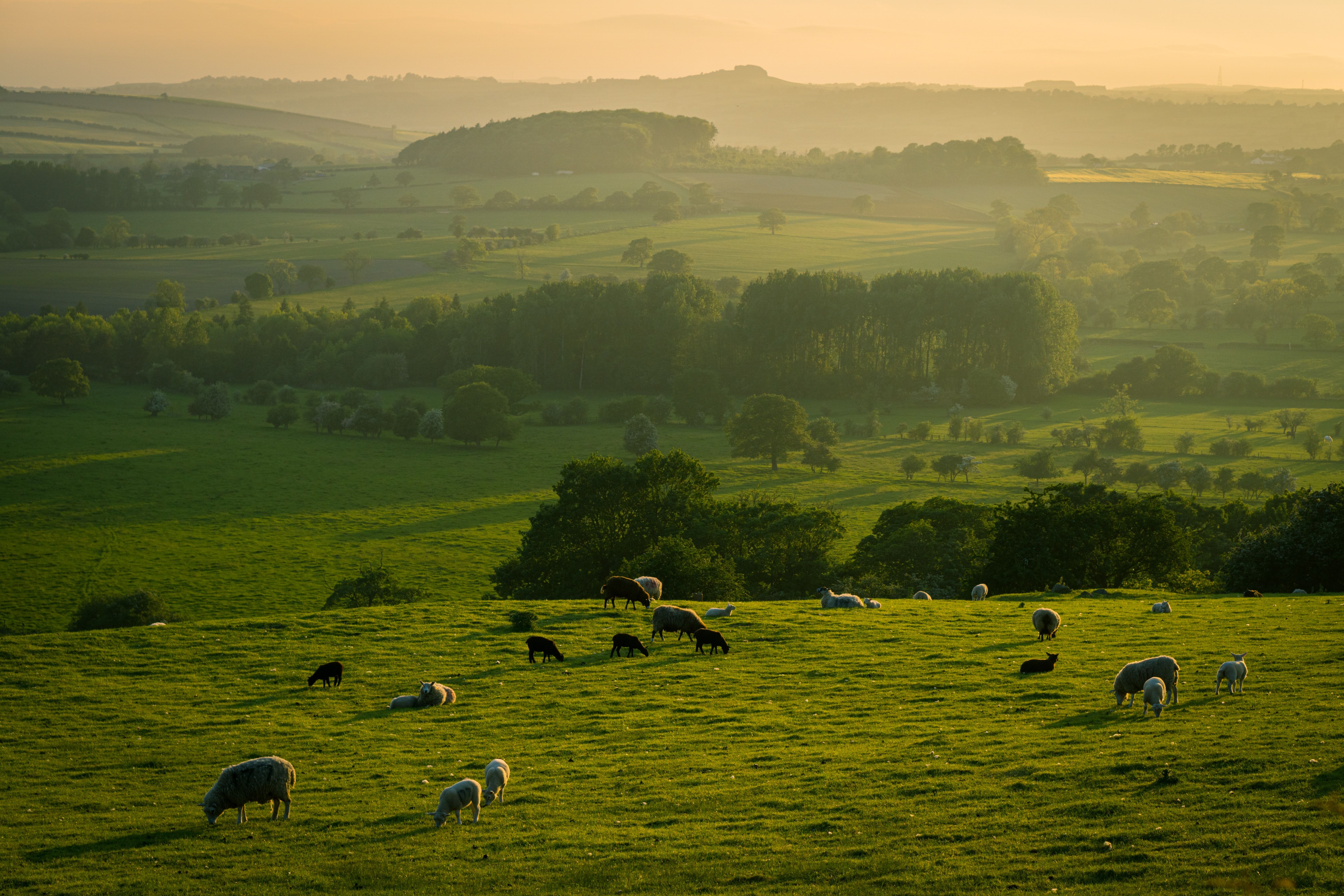Haweswater - Demonstrating how upland farming, biodiversity recovery and water services work together to provide benefits for people, nature and the economy
On the eastern edge of the Lake District National Park in England, Haweswater sits within a dramatic landscape of mountains, moorland, rushing streams, bog and woodland. The area is a vital source of water for the Haweswater reservoir, which provides two million homes and business across the north-west of England with drinking water. The reservoir and surrounding land is owned by the water company for the region, United Utilities (UU).
The Royal Society for the Protection of Birds (RSPB) have been working with UU on the catchment for decades, but in 2011 they took on the tenancies of two farms on the catchment, which, together with their associated grazing land, covers about 3,000 hectares, about a third of the whole Haweswater estate. Working in partnership with UU, the land is now managed in a way that addresses several societal challenges including, the economic uncertainly for upland farming, the decline of upland bird species and decreasing raw water quality reaching reservoirs. The aim is to demonstrate how ecological restoration can work alongside sustainable upland farming, benefitting water, wildlife and people.
The Solution: How are nature-based solutions being used at Haweswater?
The work at Haweswater proactively seeks to enhance the functionality and connectivity of the ecosystem, whilst providing benefits to water and people. Water provides the vital link between interventions in the landscape from higher upland reaches of the site to the valley below, including through:
- Restoring watercourses – Swindale Beck, a river which had historically been artificially straightened and its riverbanks raised, has had its natural function restored. By creating a more meandering course and removing raised banks, the water is now allowed to flood onto the meadows, slowing its flow down the valley, helping to reduce flooding downstream. The restoration has also improved conditions for wildlife; Atlantic salmon rapidly recolonised and now spawn in the restored sections.
- Blocking artificial drains and restoring peat bogs – Working together with Natural England, Cumbria Wildlife Trust and other partners, over 50km of artificial drains have been blocked, raising the water table to increase the abundance of peat-forming bog mosses and so increasing carbon sequestration. This has resulted in reduced peat erosion allowing habitats to recover, greater volumes of water to be stored in the land, helping slow the velocity of water reaching the rivers below and supporting a greater diversity of specialised moorland wildlife.
- Changes to livestock stocking and transparent financing – Lower stocking rates of livestock relieves pressure on compacted soil, improves soil and water quality, encourages regeneration of vegetation, and can improve farm profitability through reduced input costs. The team have published the farming accounts for Naddle and Swindale Farms to help be transparent about the opportunities and challenges associated with upland farming within the current systems. Without significant government grants - over a quarter of a million pounds per year at Haweswater - the farm business here would make a huge loss. The team are now looking into alternative financing to engage with small-scale local enterprises and the local economy, and with the emerging markets for public money for public goods.
- Tree planting and woodland restoration – Over 100,000 trees have been planted at Haweswater since 2011, to reduce the amount of sedimentation in water reaching the reservoir from soil erosion and to create new homes for woodland wildlife. There is an expanding on-farm tree nursery which provides locally sourced saplings.
 Photo: iucn
Photo: iucn
The Result: RSPB and United Utilities partnership
Prior to RSPB taking over the tenancies at Haweswater, they had worked with UU to develop the Sustainable Catchment Management Programme, known as SCaMP. This long-term project addressed the problem of declining water quality through deploying new approaches to land management. SCaMP has provided significant investment into farm businesses to improve the way in which land is managed, and so far, indicates that interventions are slowing the decline in water quality and helping to create wildlife habitats. The RSPB and UU have recently signed a Memorandum of Understanding which aims to illustrate the collaborative work to date, and a strong foundation to build more partnership work in future.
There are several additional complementary projects in the catchment, which have similar goals to the work at Haweswater. This creates the potential for improving ecosystem connectivity, knowledge sharing and having an impact at scale. For example, the Eden Catchment Partnership, has developed a plan to identify and prioritise the action needed over the next ten years to manage Eden’s rivers sustainably whilst improving the natural ecosystem services of the catchment.
Self-assessment process: Understanding Haweswater within nature-based solutions framework
Work at Haweswater aims to reduce risks from external factors, including the significant risks associated with climate change. By allowing natural processes to operate more freely, large scale habitat restoration will create a landscape that is more resilient to extremes of weather, protecting raw drinking water supplies and creating more diverse habitats capable of supporting a greater range of species that may be displaced by climate change impacts elsewhere.
Completing the self-assessment process for the IUCN’s Global Standard for Nature-based Solutions, has helped recognise Haweswater’s role in demonstrating nature-based solutions to help inform future projects and understand the role of the uplands in climate change adaptation. The verification process has highlighted the variety of evidence recommended to ensure that a project meets all NbS criteria with the goal to protect, sustainably manage and restore natural and modified ecosystems in ways that address societal challenges effectively and adaptively, to provide both human well-being and biodiversity benefits such as increasing climate resilience, reducing flood risk, and enhancing biodiversity.
